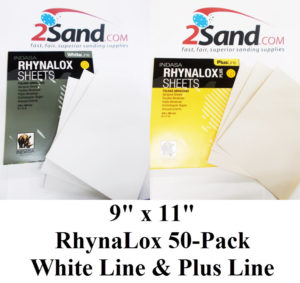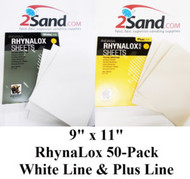Sandpaper, Abrasives, and Sander History
06 20 2017
Sandpaper and Abrasive Sheets
While "sandpaper" is the generic term for abrasive sheets, it obviously does not describe all the various types of sanding supplies available! Sanding sheets may be paper, cloth, plastic film, fiber (similar to fiberglass) and now even mesh, as in Mirka's Abranet products.

The thickness (or "weight") of the paper backing is rated on a scale A through F, with A grade being the lightest. Cloth backing is rated J, X, Y, T and M with J the lightest.
When choosing an abrasive sheet, these ratings help you figure out what backing will best suit your needs. For sanding flat surfaces, a stiffer backing will help prevent digging in, or rounding over the edges, while a lightweight backer should be chosen to wrap around a profile sanding block to smooth moldings.
While it is important to choose the right sheet for the job, if you find yourself with the wrong backer for the task at hand, here are two tips:
1) Lightweight sanding sheets can be bonded to a heavier backer to improve it's performance and durability sanding flat surfaces.
2) Heavier backers can be "broken down" and made more flexible by rolling and unrolling the sheet into a tight tube shape. The many fine creases created will make it more flexible.
History of Sanders
Prior to the advent of random orbit sanders (read sanding discs), sandpaper was primarily sold in rectangular sheets, with 9 x 11" as the standard size. Why does this matter? Well, when electric sanders became available, they typically came in two sizes: half sheet sanders and quarter sheet sanders.
The great big silver Porter-Cable sander of old, the 505 was a half sheet sander.

and the Porter-Cable 330 was a quarter sheet sander.
Knowing that these sanders were half or quarter, determined the pad size and that you could get two or four usable pieces of sandpaper for your sander from each full sheet purchased.
Before you decide this info is no longer important, bear in mind that pad sanders like these still hold a place in many professional shops. When used properly, they excel at sanding door panels and can get much further into the corners than any rotary sander can.
Admittedly, this may or may not be usable info for you personally, but we believe that the more you know, the better decisions you can make.


 Porter Cable 330 Sander
Porter Cable 330 Sander